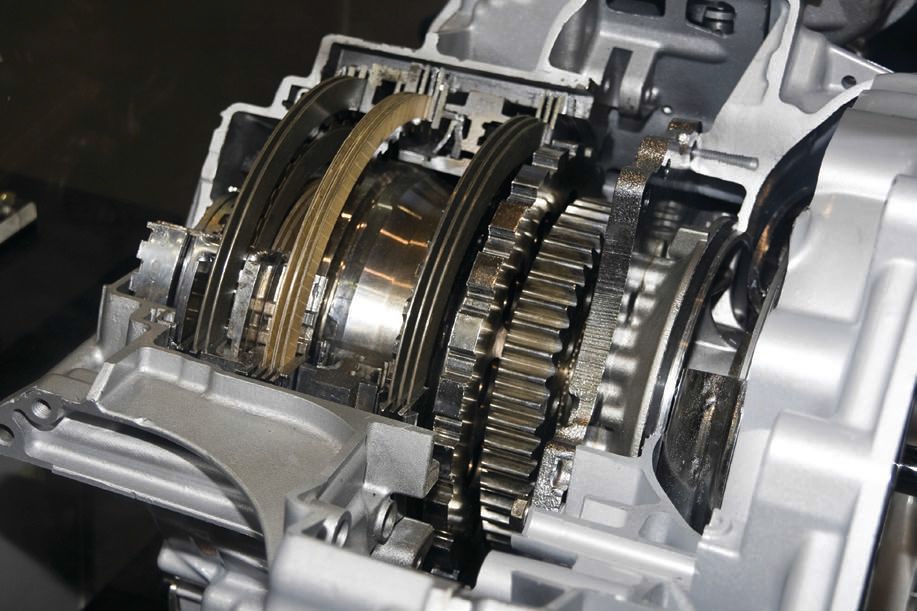What work-related new products or technologies have you encountered recently?
TLT Sounding Board February 2012
Technologies with the prefix “nano” continue to attract the attention of TLT readers and were the first item cited on many lists. Included in this group are nanomaterials, nanotechnology for lube additives and nanoparticle-sized solid lubricants. Also mentioned by many readers are biobased products such as extreme-pressure additives. Many readers mentioned new base oils to replace traditional petroleum products. On the non-work-related new technology side, products beginning with a lower-case “I” are engaging readers. Airless tires, electronic chips in passports and a 3D printer also were mentioned.
Grease analysis. New technologies that allow for routine condition monitoring tests to be performed on used greases.
New advances in traction fluids for rolling traction devices like CVP and Toroidal types.
Hydraulic hybrid vehicles.
Nanotribology and friction properties of graphene.
Minimum quantity lubrication in metal machining.
Ionic liquids.
The introduction of oil-soluble PAGs and their performance capabilities.
Gas-to-liquid base oil technology is fascinating.
New and improved in-plant lubricant testing for viscosity, TAN and other vital properties.
Nanotechnology for lube additives.
Nanoparticle-sized solid lubricants.
Thin-film, long-term rust preventive technology. Who would have thought that we would finally attain 100-plus hours of salt spray with film that is easy to remove!
Lubrication of turbochargers in performance engines.
New bio-based, extreme-pressure additives.
Heard about a non-flammable, ultra-thin lubricant with corrosion preventive properties that actually works.
Potential new base oils to replace conventional oils, PAGs, ionic liquids and so forth.
Use of nanoparticles or nanomaterials to enhance lubrication functions. Re-emergence of biodegradable and biorenewable basestocks.
Hot ice.
New technology PAG fluids for power generation and marine applications. Setting the standards for performance and environmental concerns.
Nanolubrication.
Water removal by osmosis using super-dry air.
Water-lubricated underwater bearings.
Fullerene type nanoparticle antiwear additives.
PAG base oils that are compatible with mineral oils and PAOs. Plant-based base oils.
New oil analysis monitors and procedures.
Diamond coating on the faces of the mechanical seal.
Using cold CO
2 to cool cutting operations.

Ionic liquids, nanoparticle additives, novel silicate additives.
Metal analysis by Q100 instrument. No sample preparation and concentration results of more than 20 elements in a matter of seconds.
Technologies I read about in TLT: more effective access to hydrogen fuel and self-lubricating omniphobic surface.
High-pressure lubricants.
Energy savings in gearboxes using high-performance gear oils. Energy savings proved by a very controlled methodology.
Do you think we’ll see more, less or about the same amount of lubricant-related new technologies in 2012 compared to 2011?
More
41%
Less
9%
About the same
50%
Based on results from some 13,000 TLT readers.
What are some interesting new technologies you’ve encountered that are not lubricant-related?
Materials science.
The introduction of direct-injection gasoline engines that allow for higher compression and better engine efficiency.
Improved CMMS systems.
Electronic chips in passports for tracking people. Big Brother is indeed watching!
Gasoline engine direct-injection.
Airless tires (under development).
Hydraulically operated solar tracker that moves constantly but cannot be seen moving.
Neutral networks in artificial intelligence.
Wind energy units designed without gearboxes and new wave energy technology.

Face time from Virginia on the iPad 2 with my relatives in Alaska.
Mining underground GPS type system.
New properties and potential applications of carbon nanotubes.
Cyber security to ensure that terrorists cannot hack into everyone’s vehicle on board computers and cause havoc on the roads.
The 98% junk area of DNA. Which of course is not a junk area.
Solar-powered (light sail) spacecraft may be the way to distant planets in the future.
New wind turbines.
Nitinol 60 super-elastic bearing material.
I’ve seen videos on these 3D printers. Amazing! On the demo I saw, they printed a roller bearing that, when the copy was complete, the elements moved.
Cloud data storage.
More effective camshaft machining.
Editor’s Note: Sounding Board is based on an e-mail survey of 13,000 TLT readers. Views expressed are those of the respondents and do not reflect the opinions of the Society of Tribologists and Lubrication Engineers. STLE does not vouch for the technical accuracy of opinions expressed in Sounding Board, nor does inclusion of a comment represent an endorsement of the technology by STLE.